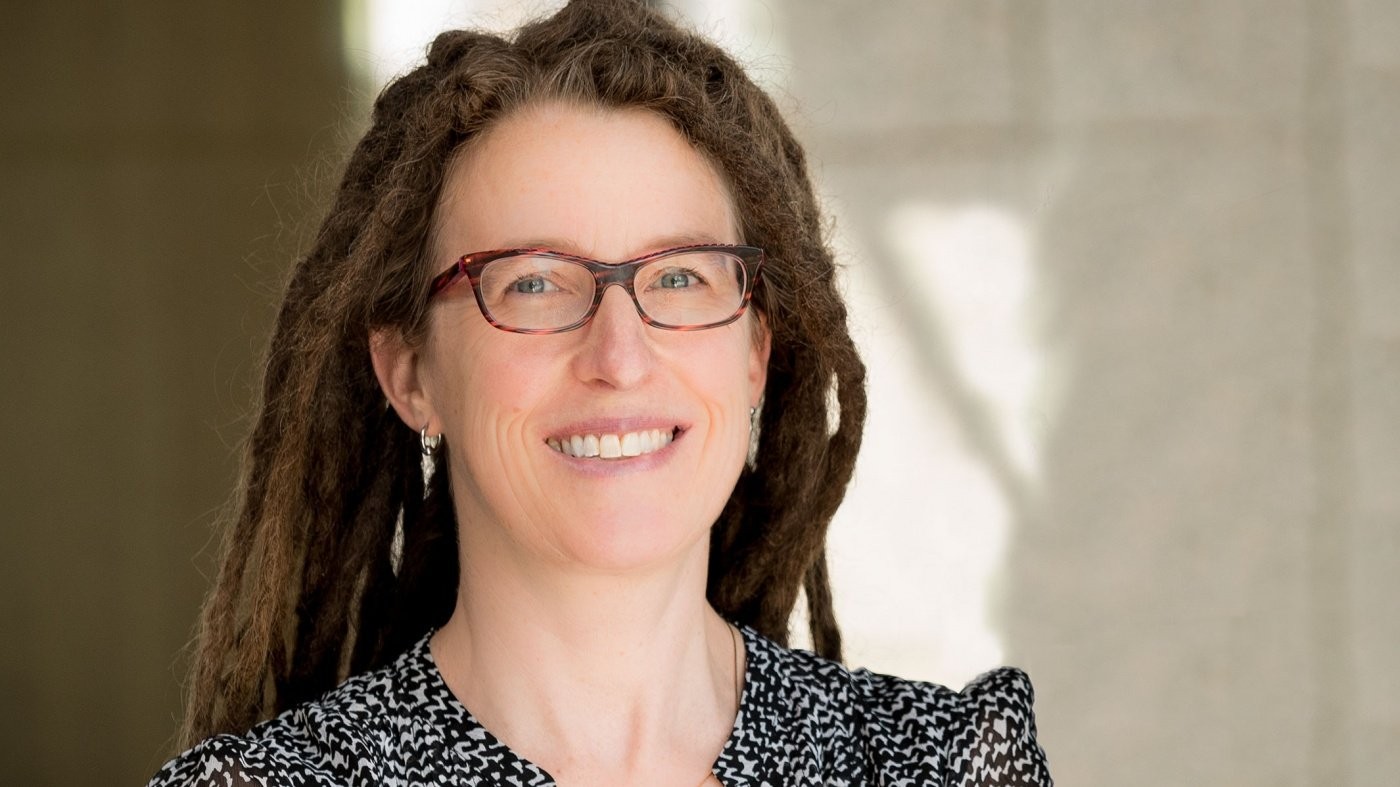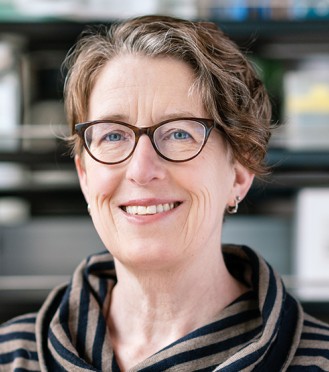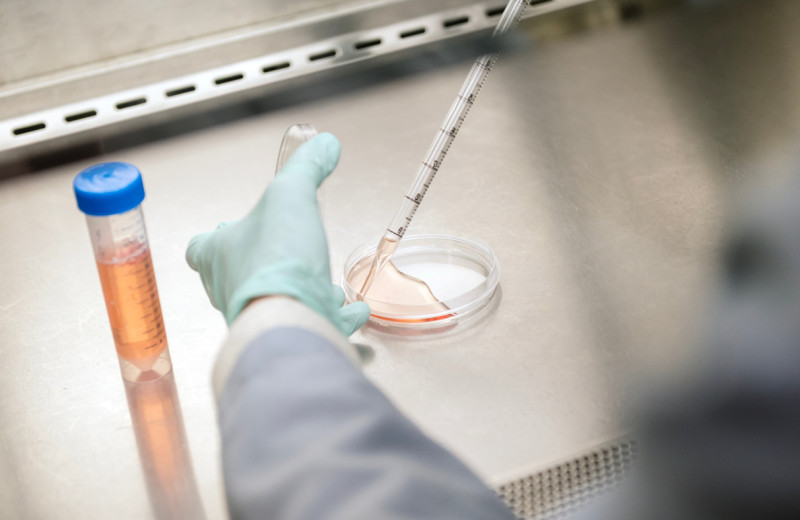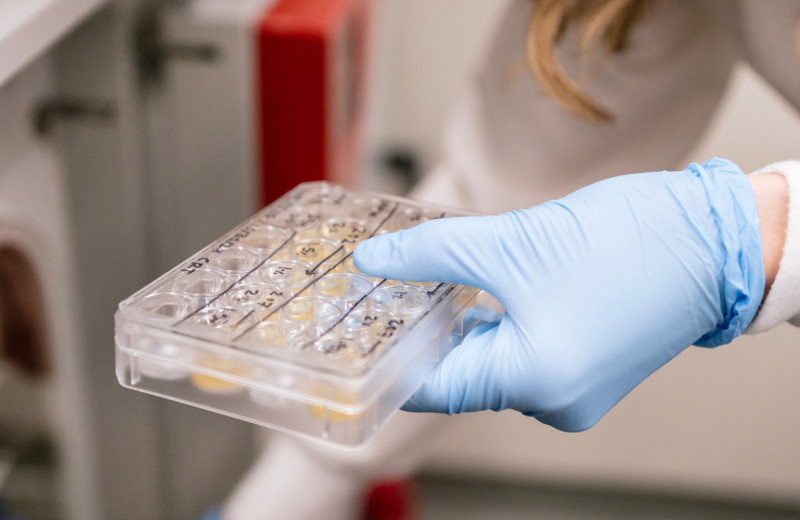Gladstone NOW: The Campaign Join Us on the Journey✕

Katherine Pollard is part of a team using the human gut microbiome as model to demonstrate efficacy of computational tools.
A tree’s growth is dependent on nutrients from the soil and water, as well as the microbes in, on, and around the roots. Similarly, a human’s health is shaped both by environmental factors and the body’s interactions with the microbiome, particularly in the gut. Genome sequences are critical for characterizing individual microbes and understanding their functional roles. However, previous studies have estimated that only 50 percent of species in the gut microbiome have a sequenced genome, in part because many species have not yet been cultivated for study.
In a recent study published in Nature, researchers from the Department of Energy’s (DOE) Lawrence Berkeley National Laboratory (Berkeley Lab), the Gladstone Institutes, and the Chan-Zuckerberg Biohub presented nearly 61,000 microbial genomes that were computationally reconstructed from 3,810 publicly available human gut metagenomes, which are datasets of all the genetic material present in a microbiome sample. The metagenome-assembled genomes (MAGs) included 2,058 previously unknown species, thereby bringing the number of known human gut species to 4,558 and increasing the phylogenetic diversity of sequenced gut bacteria by 50 percent.
A Model Community for Large-Scale Culturing Efforts
This work helps answer the question of why certain microbes have not been cultivated in the lab. Scientists have previously used metagenomics and single-cell genomics to discern the specific metabolic capabilities of uncultured microbes present in environmental samples.
“However, many environmental communities are poorly studied, so it’s not clear whether or not uncultivated organisms are really uncultivable,” said Stephen Nayfach, a scientist in Berkeley Lab’s Environmental Genomics and Systems Biology (EGSB) division and the study’s first author. “The human gut, in contrast, is intensely studied with many large-scale culturing efforts, which suggests that the many of the ‘wild,’ uncultivated species in the human gut are difficult to culture using current approaches.”
By comparing the reconstructed genomes of uncultivated species versus those that have been cultivated, the team found that uncultivated species’ genomes are roughly 20 percent smaller, on average, and are missing numerous pathways for biosynthesis of fatty acids, amino acids, and vitamins.
“Genes that are commonly missing from uncultivated gut bacteria may point toward important growth factors that have been overlooked in previous culture-based studies,” Nayfach said.
Improving Genomic Resources for Global Populations
With the help of a new tool called IGGsearch, the team compared the microbiomes of people with 10 different diseases to those of healthy individuals and found that nearly 40 percent of microbe-disease associations involve a species that did not previously have a genome.
“These disease links used to be invisible or hard to detect,” said Katherine Pollard, a senior investigator at Gladstone and Biohub, and contributing author on the study.
One new species in the Negativicutes class, for example, was strongly depleted in people with the spinal inflammatory condition ankylosing spondylitis. “As a patient with ankylosing spondylitis, I am thrilled that we are finally gaining a more complete picture of how the microbiome changes in this disease,” Pollard added.
Additionally, the team used IGGsearch microbiome profiles to build predictive models for disease and found that prediction accuracy was “significantly improved” compared to existing tools that primarily quantified the abundance of cultivated species.
Pollard, who is also a professor at UC San Francisco, added that, until now, microbiome genomic resources have been particularly sparse for individuals living outside North America, Europe, or China. “By assembling genomes from metagenomes of diverse people, we have helped to close this gap,” she said.
Extending Technologies across Microbiome Areas
EGSB senior scientist and team lead Nikos Kyrpides said that several of the computational methods and analyses Nayfach developed for this research are currently being used to enable one of the Joint Genome Institute’s (JGI) groundbreaking projects: analyzing a massive collection of other JGI-sequenced MAGs from diverse environments. He added that this type of analysis hinges on several critical factors: the availability of the microbiome data; the availability of the sequence data in public archives; and the lack of any data utilization restrictions from the community, as referenced in a recent Science policy paper on which he and Katherine Pollard are co-authors.
For Kyrpides, the collaboration with Gladstone and CZ Biohub allowed his team to demonstrate the far reach of technologies developed across all microbiome areas. “This project is another excellent showcase that aggregated data from multiple studies which can enable us to address questions with far reaching implications that cannot be answered using any individual study alone,” he said.
Other authors on the paper were Zhou Jason Shi of both Gladstone and Biohub, and Rekha Seshadri, a data scientist in EGSB. All of the EGSB scientists on the study are also affiliated with the JGI. This work was supported by the National Science Foundation, the Chan-Zuckerberg Biohub, and the Gladstone Institutes. JGI is a DOE Office of Science user facility.
Source: Berkeley Lab
For Media
Julie Langelier
Associate Director, Communications
415.734.5000
Email
About Gladstone Institutes
Gladstone Institutes is an independent, nonprofit life science research organization that uses visionary science and technology to overcome disease. Established in 1979, it is located in the epicenter of biomedical and technological innovation, in the Mission Bay neighborhood of San Francisco. Gladstone has created a research model that disrupts how science is done, funds big ideas, and attracts the brightest minds.
Support Discovery Science
Your gift to Gladstone will allow our researchers to pursue high-quality science, focus on disease, and train the next generation of scientific thought leaders.
Gene Editing Strategy Could Treat Hundreds of Inherited Diseases More Effectively
Gene Editing Strategy Could Treat Hundreds of Inherited Diseases More Effectively
Scientists at Gladstone show the new method could treat the majority of patients with Charcot-Marie-Tooth disease.
News Release Research (Publication) Neurological Disease Conklin Lab CRISPR/Gene EditingGenomic Maps Untangle the Complex Roots of Disease
Genomic Maps Untangle the Complex Roots of Disease
Findings of the new study in Nature could streamline scientific discovery and accelerate drug development.
News Release Research (Publication) Marson Lab Genomics Genomic ImmunologySix Gladstone Scientists Named Among World’s Most Highly Cited Researchers
Six Gladstone Scientists Named Among World’s Most Highly Cited Researchers
The featured scientists include global leaders in gene editing, data science, and immunology.
Awards News Release Corces Lab Doudna Lab Marson Lab Pollard Lab Ye Lab




